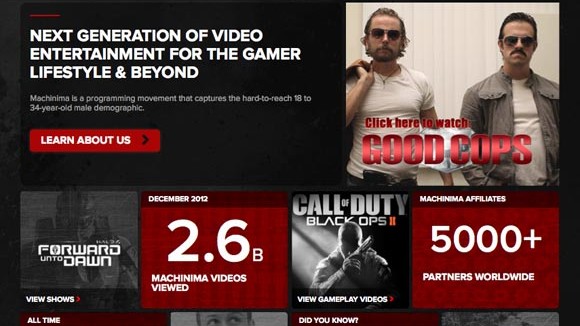

YouTube-Funded Channels Are Under Fire For Mistreatment of Content Producers

Well, that didn’t take long. The entertainment companies that took millions of dollars from YouTube to operate content channels are coming under fire for their mistreatment of content producers, including exploitative business practices and overreaching contracts. Last week, the LA Weekly published a lengthy piece detailing some of the abuses by these YouTube-funded networks.
The article focuses specifically on two of the largest networks today: Machinima and Maker Studios. Machinima, as you may recall, originally began as an animation movement, but today the name has been co-opted by an entertainment brand that celebrates video game culture in a more general fashion.
Machinima, which represents over 6,000 content creators as part of its channel, has come under fire for contracts that take lifetime ownership rights of everything a content creator posts on YouTube. A skeptic might say the contracts were specifically designed to take advantage of the young creators who make up the largest portion of their content-production network. The LA Weekly states that Machinima is in the process of revising their contracts, but it’s fairly evident that creator exploitation is a big part of their business model, and access to cheap content could also be partly why Machinima is so immensely attractive to investors. Last May, Machinima raised $35 million in a venture capital funding round led by Google, which also owns YouTube.
The LA Weekly draws an interesting analogy between the current situation faced by content creators on YouTube and the old-school contract system for actors during the Golden Age of Hollywood:
It’s tempting to write off each contract dispute as just that — an individual incident. But taken together, these fights constitute a bigger issue, one not unlike those that developed when the film industry was first finding its feet.
Like Maker Studios and Machinima, the film studios of the ’30s and ’40s didn’t just produce content, they distributed it, says Tino Balio, professor emeritus of communication arts at the University of Wisconsin at Madison and an expert on the history of the American film industry.
At the time, studios produced shorter, lower-budget films on a tight schedule because theatrical runs were much shorter — only about a week. Studios churned out one major movie every week, plus a few B films, to meet the demand.
“The studios were run on a factory basis. They had to have total control of their talent in order to assign them to projects, in order to make all of these films to keep their theaters filled,” Balio says. “They could not negotiate with talent each time they decided to make a motion picture.”
They met this challenge by adopting the “option” contract. A new star might be signed for a fixed term (typically seven years). Each year, the studio had the option to renew the contract — but the actors were unable to break it during its duration.
“It was bondage,” Balio says. “It changed over time, but basically, when a performer signed an option contract, he or she was bound to the studio because no other major studio would hire that performer if he or she broke their option contract.”
While the channels discussed in the LA Weekly piece don’t create much in the way of original animation, there are other YouTube-funded channels that do, notably Mondo Media, Shut Up! Cartoons and Cartoon Hangover. Thankfully, none of those channels have been accused of similar mistreatment of creators, but the demand for large amounts of content by these networks means that the potential for abuse exists. As always, animation content creators should exercise caution and have a lawyer review and explain any contract before signing it.
(Thanks, Chris Webb)

.png)